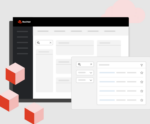It may seem like the term “middleware” has been on vacation, but Red Hat has introduced a new version of OpenShift Enterprise, version 2.2, which brings back the classic types of middleware enterprise developers have worked with for years. The greatest difference, however, is that this time the middleware is arriving as part of a Platform-as-a-Service.
Version 2.2 includes new PaaS offerings, which fall under the xPaaS brand at Red Hat. Pierre Fricke, director of product marketing for JBoss at Red Hat, said, “We’ve articulated a vision around xPaaS JBoss Services for OpenShift. We’re offering a new way of building, integrating and running applications. For some of these [competing PaaSes] around today, PaaS means application PaaS: They tend to focus on Ruby or specific Java frameworks—maybe Java EE, though a lot don’t have that. A few companies that do business processes on PaaS.
(Related: Red Hat, Cloudera team up for Big Data)
“Our view is of an extended PaaS where ‘X’ means all these services required to build modern applications.”
To this end, said Fricke, Red Hat is now including an integration layer and a message queue layer into xPaaS, giving developers a way to pass messages into a queue, as well as a way to transform those messages into the needed formats while data is still in the pipeline.
Joe Fernandes, senior product marketing manager of Red Hat’s cloud business unit, said that other offerings from IBM and Pivotal are the direct competition for Red Hat’s OpenShift. With these two new enterprise middleware offerings in place inside of its xPaaS product, Red Hat is setting its sites squarely on other highly capitalized PaaS offerings.
“Certainly in the enterprise we see CloudFoundry as our biggest competitor,” said Fernandes. “It’s an open-source project, but what we’re really competing with is commercial distributions. OpenShift Enterprise is positioned against Pivotal CF and IBM Bluemix.”
JBoss Fuse for integrations and JBoss A-MQ for messaging are both included in xPaaS as of today.






